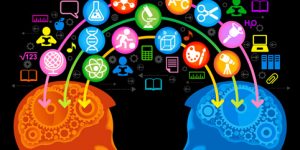- ICTpost Governance Bureau
Marginalized communities are communities in underserved areas, both urban and rural, that include the following target groups, among others: Women, Persons with Disabilities, Unemployed, Poor, Youth, Elderly, Immigrants and Micro-enterprises.
Marginalization can be defined as not belonging to the mainstream culture, and thus lacking the social capital to partake from the benefits of a society and to have an effect on its culture.
Information and communication technology provides a broad range of powerful tools to enhance both the knowledge and communication dimensions of development. There are priority areas in which ICT potential could be harnessed for the reduction of poverty, opportunity, empowerment and security, opportunity makes markets work better for the poor and expands poor people’s assets.
Empowerment makes government institutions work better for poor people and removes social barriers.
Security helps poor people manage risk. The wide reach of ICT infrastructures, such as the Internet, radio and television enable the delivery of education to isolated rural areas, and information technology training is beginning to be offered at rural and disadvantaged communities.
Equity issues are critical — and acute. It is clear that there are critical equity issues related to the uses of ICTs in education. There is a real danger that uses of ICTs can further marginalize groups already excluded or marginalized from existing educational practices and environments. That said, ICT use also holds very real promise for facilitating greater inclusion of such groups into existing educational practices and environments as well.
While ICT is increasingly being used in pilot projects to aid in the education of marginalized and/or indigenous groups in India, there is very little impact data to date on impact and cost effectiveness of such programs, and there have not been many nor case studies and lessons learned from such programs.
Cultural context is all important It is clear that ICT in education interventions targeting marginalized and indigenous groups must place ICT-related interventions within the broader cultural and social contexts that frame education in issues in such groups more generally. Failure to do so may result in minimal (or deleterious) results from such programs.
There is a richly documented history of what works and what doesn’t related to the uses of ICTs to assist in the education of students with a variety of disabilities, both cognitive and physical based on Indian experience. Certain applications of ICTs have been shown to have positive and important effects on the educational development of students exhibiting a great variety of special needs (including blind, deaf, and learning disabled students).
ICTs and IMMs (interactive multimedia) that were developed in advanced countries will be incompatible, perhaps even incomprehensible, in developing regions. Policymakers need to assess the experience of their target groups. Are they well informed users with outdated ICTs, or are they new users who are comfortable with recently introduced ICTs Students learn about information technologies in different ways, at different levels of sophistication. Policymakers should gather data on the experience and demographics of the targeted learners, such as age, experience, type of experiences, and access to ICTs.
Limited experience with all ICTs by the majority of the marginalized population will radically influence usage and acceptance. In order to the support of stakeholders during the assessment and implementation of ICTs, policymakers should engage in mediated social interaction in order to ensure participation. Secondly, those mediating the use of educational technologies needed to persevere in generating a shared vision with all participants in order to accomplish their intended educational goals. Merely making ICTs available will not ensure successful engagement.







